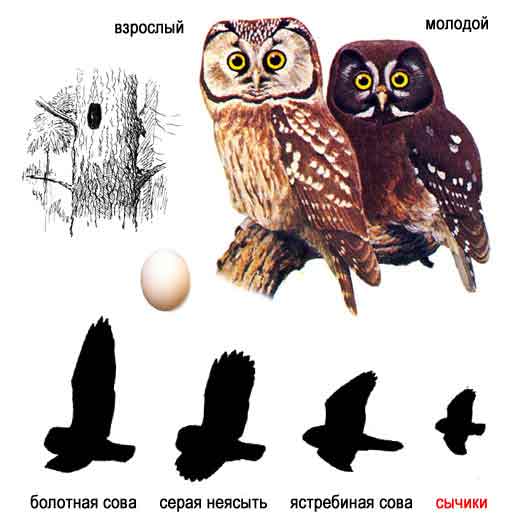
©
www.ecosystema.ru/
The Boreal, or Tengmalm's Owl was first classified in 1758 by Carolus
Linnaeus (1707-1778),
the Swedish naturalist, who developed a methode to classify and
organise plants and animals. "funereus" comes from
the Latin word for funeral.
In North America, where it is known as the Boreal Owl,
it was named after the Greek god of the north wind, Boreas.
In other parts of
the world, it is known as Tengmalms Owl.
Other names are Richardson's Owl, Sparrow Owl, Partridge-haw and
Pearl Owl .

©
www.ecosystema.ru/
Size: Length: 20-30cm (7.9-11.8")
Wing length (one wing): Females 164-185mm (6.5-7.3") Males
158-178mm (6.2-7")
Weight: Females 126-194g (4.5-6.8oz) Males 90-113g (3.2-4oz)
A nocturnal Owl, also
unsociable.
Adult males are territorial, however, territories are small.
Males will
sing intensively only as long as they are unmated.
Flight is straight and noisless, with soft wingbeats.

©
www.ecosystema.ru/
The Boreal or Tengmalm's Owl nests mainly in old woodpecker cavities,
but may also use natural cavities. They will take readily to artificial
nest boxes.
Males begin
searching for nest holes in late Winter.
Prey items are often deposited into the hole, after which, the male
will sing from a perch.
If an interested female approaches, the male will fly to the cavity
and utters a stuttering or trilling song.
The female may then inspect the nest hole, and if she accepts it,
will stay.
The male brings her food while she is in the hole.
Several days later, the female lays 3-8 white eggs which are laid
a day apart.
Incubation begins with the first or second egg laid, and lasts 28-29
days.
The female does all incubation and the male brings food to the nest.
The chicks hatch a day apart, and their eyes open after 10 days.
They leave the nest at about 30-32 days, and are looked after by
the parents for 4-6 weeks.
They are mature at about 9 months.
 ©
www.ecosystema.ru/
©
www.ecosystema.ru/
Boreal Owls usually hunt by perching on low branches or tree trunks.
The Owl will scan the ground by moving its head slowly from side to
side,
listening for movement of potential prey,
as they hunt primarily using their excellent, directional hearing.
When a victim is located, the Owl will swoop on it from the perch.
Prey Items are mainly small rodents, especially Voles.
They also eat lemmings, shrews, mice, and moles.
They occasionally take small birds, squirrels, bats, frogs and beetles.
 ©
www.ecosystema.ru/
Text
from: http://www.owlpages.com
©
www.ecosystema.ru/
Text
from: http://www.owlpages.com












